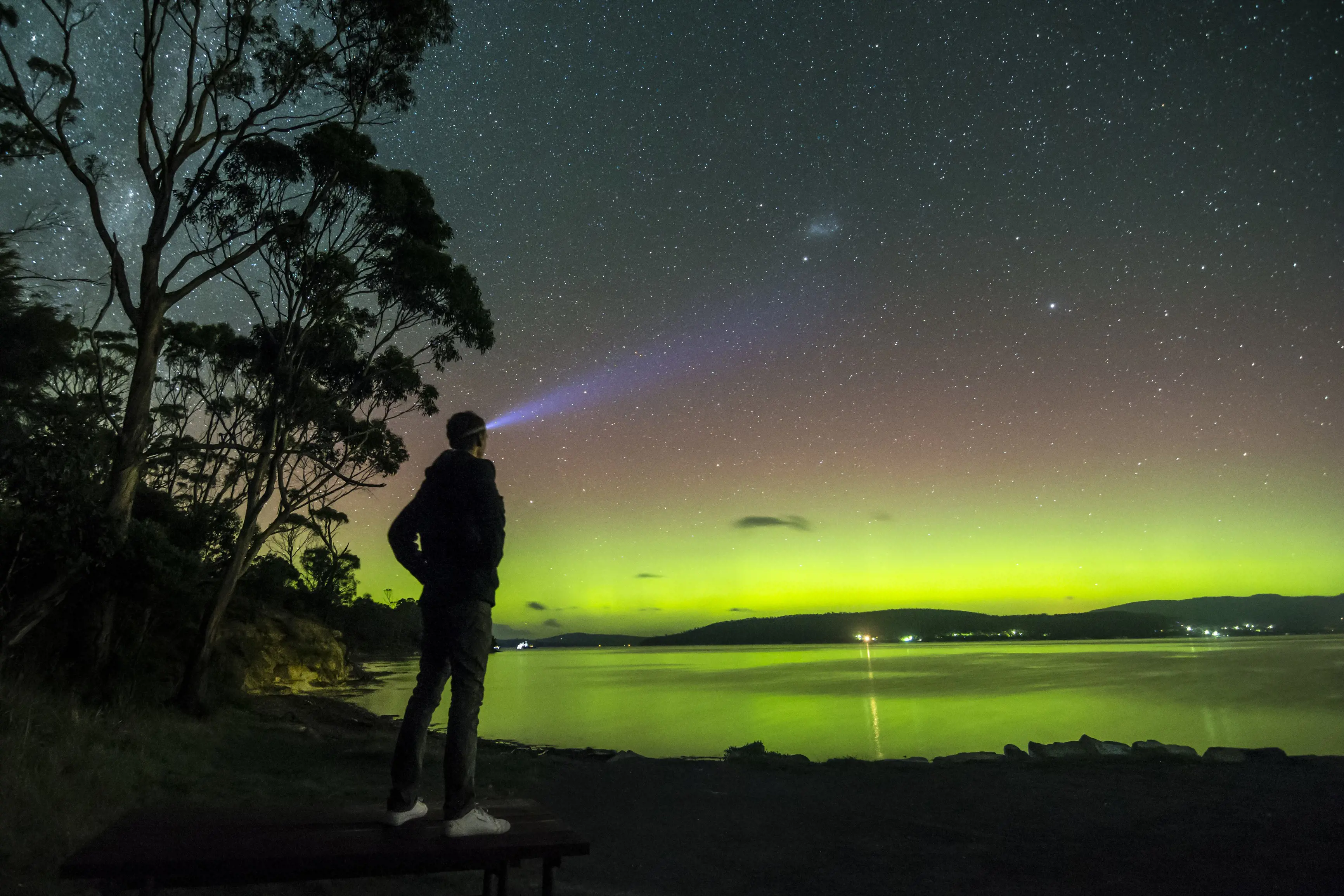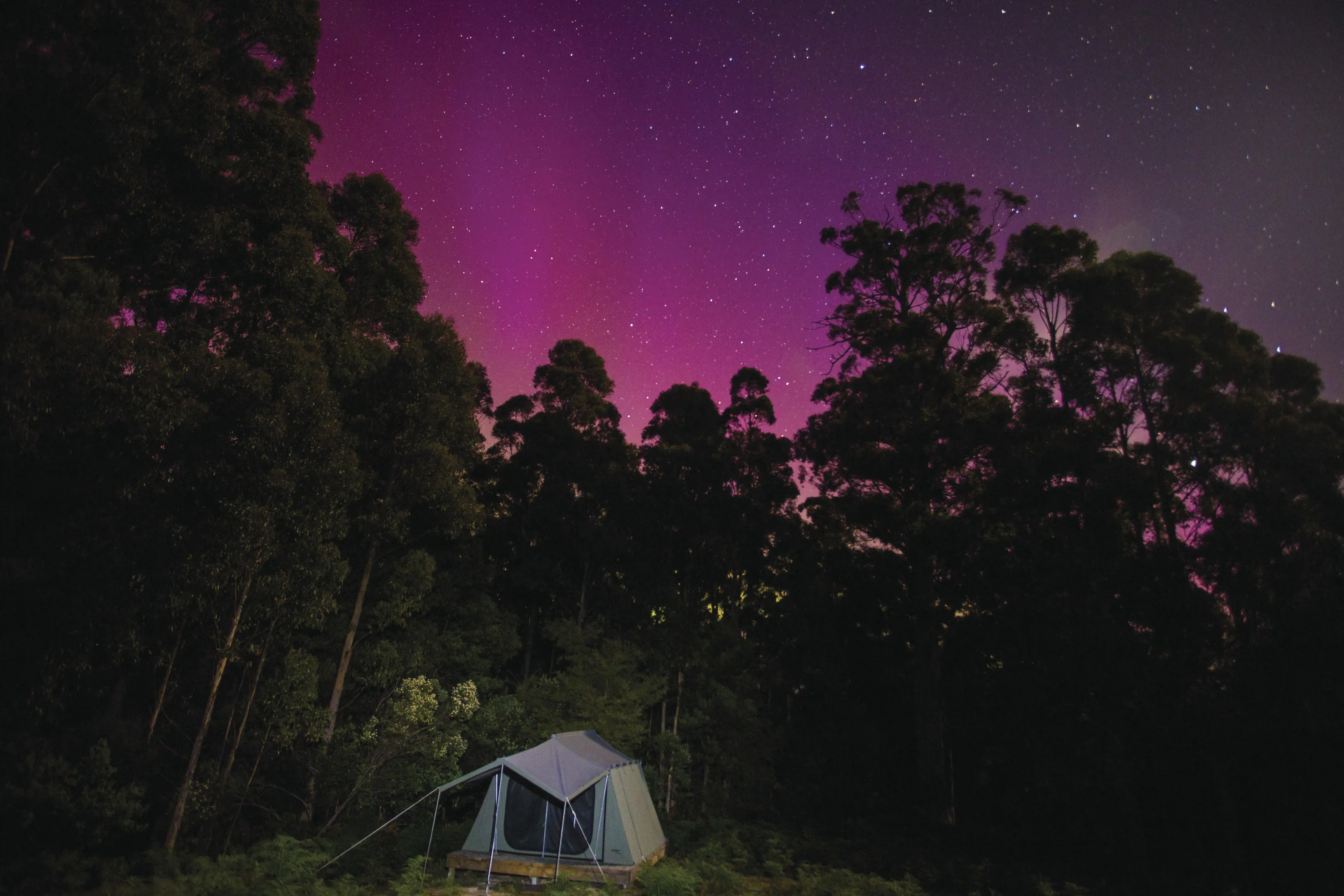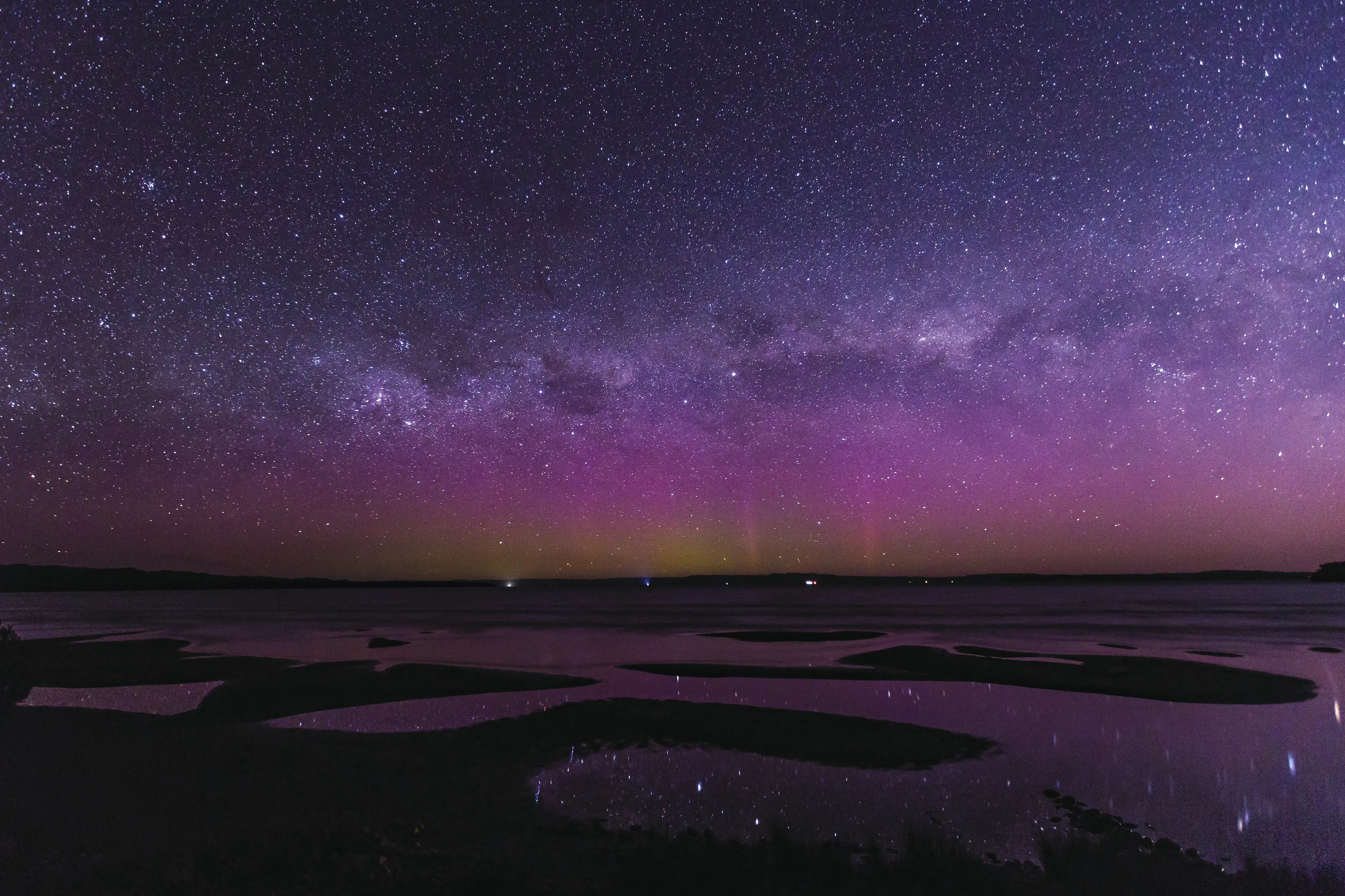It’s the Southern Hemisphere’s finest light show – the dancing colours of the Southern Lights, aka the Aurora Australis.
This phenomenon is a more reserved version of the famed Northern Lights seen across Arctic regions of the Northern Hemisphere.
Tasmania is arguably the best place in the world to witness the southern version of this elusive and ethereal light show.
Sightings are fleeting and faint. This is a celestial event that can play hard to get – images of green beams and purple glows are not the norm, and sometimes they’re barely visible to the naked eye.
But if you’ve come to photograph the Aurora Australis, there’s an alchemy that takes place behind the shutter, transforming the ghostly lights into a burst of colour. There’s a thrill in this hunt that’s turned thousands of Tasmanians into aurora chasers, seeking the finest vantage points on the best nights to witness this magical space shimmy.
We’ve talked to the experts and prepared a guide so you’ll have the best chance to witness an aurora. When you do, it's a dance you’ll never forget.
Everyone’s out just celebrating nature and the beauty of the world, and that’s a special thing. Photographer Luke Tscharke
What are the Southern Lights?
Auroras occur when charged particles burst from the sun, creating a solar wind. When this solar wind is drawn towards the North and South poles, it brings with it particles that interact with gases in the Earth’s atmosphere, sparking these beautiful displays of light in high-latitude regions.
In the Northern Hemisphere, where inhabited lands sit closer to the pole, the Aurora Borealis can be as showy as a peacock, producing vivid displays of green, orange, purple and yellow light. In the south, we do things more subtly, with a shyer style of aurora. "In the vast majority of the smaller auroras, it’s like a faint white cloud,” says Hobart photographer Luke Tscharke, “but you can see it very faintly moving about.”
That said, Tasmania experienced one of its most luminous auroras in November 2020, when a colourful spectacle was visible across the island, even in well-lit inner Hobart suburbs. So you just never know.
“I find it such a beautiful phenomenon,” says Tscharke. “It’s amazing when you’re out there with a bunch of other people, and the aurora fires up and there’s almost cheers. Everyone’s just celebrating nature and the beauty of the world, and that’s a special thing.”

An aurora is a true photographic extravaganza, though this is not a simple point-and-shoot moment.
When to see an Aurora
Winter is prime time to witness nature's disco ball, with the long southern nights drawing out the potential for a light show. That said, the Aurora Australis can be seen year-round from Tasmania – the November 2020 dazzler appeared less than four weeks before summer.
Weather and atmospheric conditions are important factors. Cloudy nights obscure any aurora activity, while the light of the moon can also dim the aurora experience. “Moon phase is important, and making sure you don’t have any cloud,” says Tscharke. “If the moon is getting to the darker phases – 25% or less – I think that’s ideal.”

How to predict an aurora
No one knows precisely when an aurora might occur. Space weather maps and predictions are helpful, but ultimately the sun calls the show. There are long-range forecasts of auroras, but dedicated chasers often hang in suspense until just a few days before its stage call.
"We only know about three days in advance if an aurora might happen," says Margaret Sonnemann, creator of the Aurora Australis Tasmania Facebook group and author of the Aurora Chaser's Handbook. "But that's just an educated guess. We never truly know.”
Aurora chasers rely on a series of resources in the quest to capture Southern Lights moments. The Aurora Australis Tasmania Facebook group has an active community of more than 100,000 people, while the Aurora Australis Tasmania Alert NOW page delivers on-the-spot reports of aurora sightings.
The Bureau of Meteorology’s Space Weather Services division posts current aurora conditions – you can subscribe for alerts – and there are apps such as My Aurora Forecast and SpaceWeatherLive offering information on the likelihood of auroras.
Where to go
In the dark of night, when word has spread of a possible aurora, dark and remote places around Tasmania begin to fill with people and cameras. The Aurora Australis is sometimes seen right across the island in open areas with unobstructed views to the south. But most of the prime perches are in Tasmania’s south, closer to the South Pole.
Perennial favourite spots include Goat Bluff on South Arm Peninsula, about 35km south-east of Hobart; Carlton Beach, 40km east of Hobart; and Tinderbox, 20km south of Hobart. The summit of kunanyi / Mount Wellington is also a favourite spot, though the glow of Hobart’s lights can obscure the natural lights and you’ll need to brave the chill at 1270m above sea level.
Good aurora spots in the north include the Highland Lakes, the hill beside Highfield Historic Site above Stanley, and Braddons Lookout near Forth.
A good photographers’ tip: find a location that features an interesting Tasmanian subject to add to the dazzling sky. Spots such as Dove Lake (looking south towards Cradle Mountain), Coles Bay (looking towards the Hazards), the Tessellated Pavement at Eaglehawk Neck, and Cape Bruny Lighthouse can create spectacular photographic additions to the curtained night sky.
How to capture an Aurora
An aurora is a true photographic extravaganza, a chance to magically transform a dark scene into brilliance, though this is not a simple point-and-shoot moment.
“You need a proper SLR camera,” says Carmel Gledhill, of Hobart Snapshot Tours. “There’s not much point trying to capture it with your phone. You’ve got to have the camera really still, and you can’t hold a phone really still for eight seconds.
“I always make sure I have my tripod, I always carry a torch, and I make sure my batteries are fully charged.”
Use the widest lens possible, and the widest aperture to allow maximum light into the camera (an f-stop of 2.8 is ideal). Opt for your camera’s highest ISO (800 to 3200 is best) and a shutter speed from five to 30 seconds, depending on the brightness of the aurora – the fainter the light, the longer you’ll need the shutter open.
Set the camera to manual mode, and the focus to infinity, and you're ready to capture Tasmania’s favourite dance.

